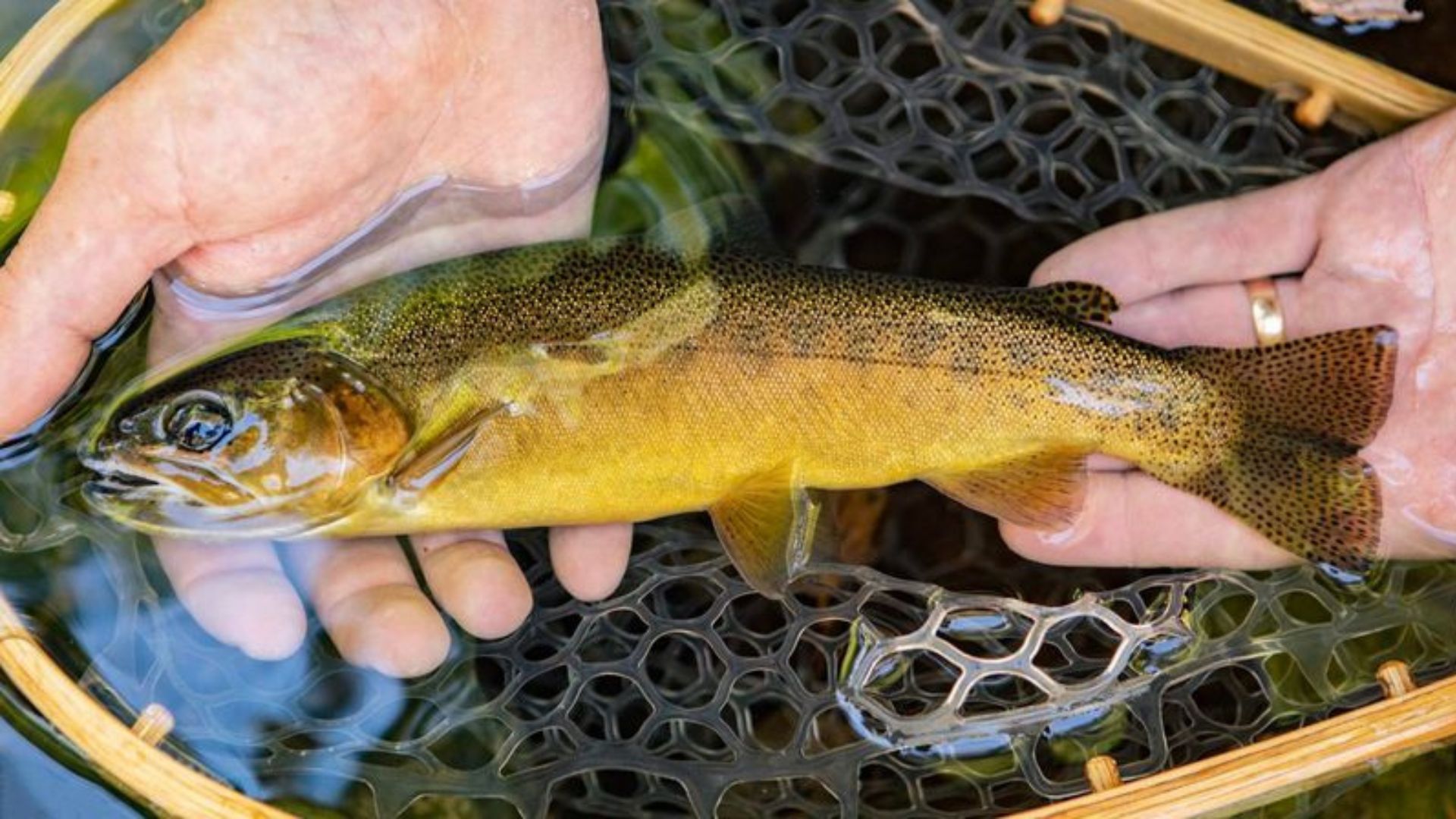The rich aquatic biodiversity of the United States is at risk as numerous fish species face the threat of extinction.
This article highlights ten fish species that are endangered and could disappear soon if urgent conservation actions are not taken.
These species are vital to their ecosystems and losing them could have far-reaching impacts on biodiversity and the health of aquatic environments. Let’s dive into understanding these unique creatures and explore what makes them so vulnerable.
1. Devils Hole Pupfish
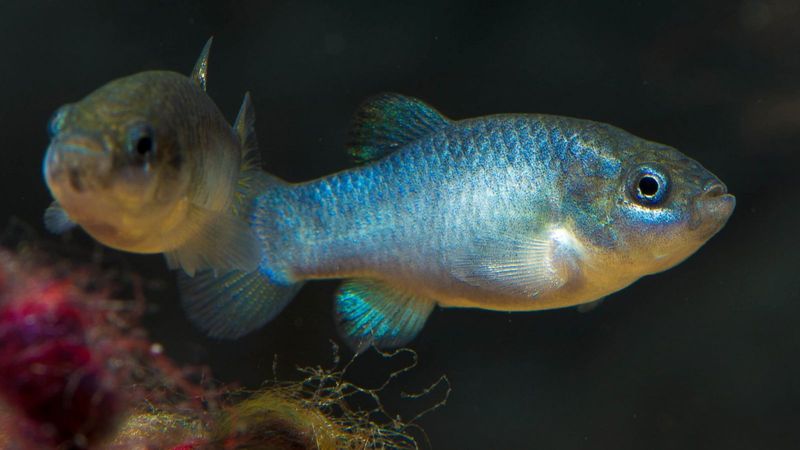
The Devils Hole Pupfish is one of the rarest fish species in the world, residing in a single location: Devils Hole in Nevada. This small, vibrant blue fish is adapted to a unique environment, surviving in warm water with low oxygen levels.
Despite its resilience, its population has dwindled to critically low numbers. The challenges facing the Devils Hole Pupfish stem from habitat loss, climate change, and water level fluctuations.
Conservation efforts are crucial, including habitat protection and captive breeding programs. The Devils Hole Pupfish serves as a symbol of how environmental changes can threaten species persistence.
Efforts to save this fish highlight the importance of preserving unique ecosystems. The survival of the Devils Hole Pupfish is uncertain, but with increased awareness and intervention, there is hope for its future.
2. Oregon Chub
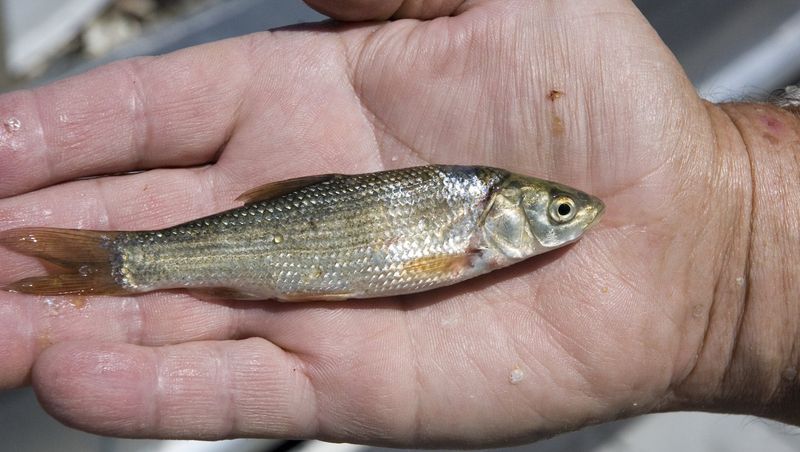
The Oregon Chub is a small, silvery fish native to the backwaters of the Willamette River Valley in Oregon. This species thrives in slow-moving or still water bodies with ample vegetation, where it finds food and shelter.
Once abundant, the Oregon Chub faced a steep decline due to habitat destruction and the introduction of predatory fish species. Conservation measures, including habitat restoration and protection, have aided in its recovery, yet threats remain.
The Oregon Chub’s story underscores the need for ongoing habitat management and the importance of maintaining genetic diversity. Continued monitoring and public education about its habitat needs are essential to keep the Oregon Chub from slipping back toward extinction.
Efforts to restore aquatic ecosystems can benefit not only this fish but also other species that share its habitat.
3. Alabama Sturgeon
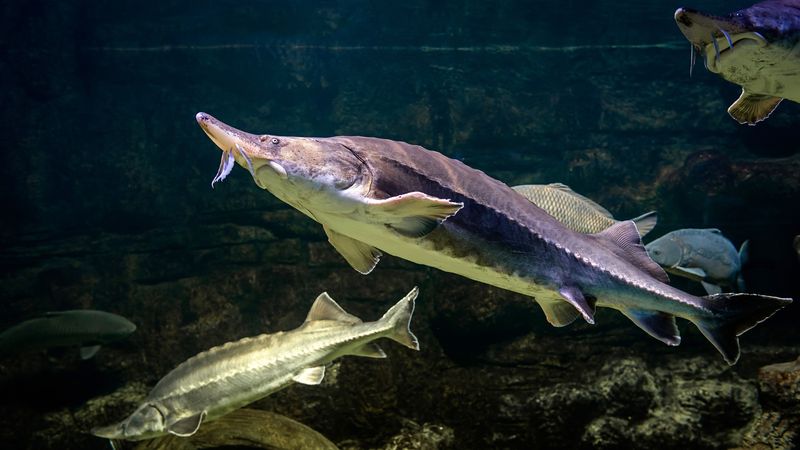
The Alabama Sturgeon is a slender, prehistoric-looking fish found in the rivers of Alabama. This species is critically endangered due to habitat fragmentation, pollution, and overfishing, which have drastically reduced its numbers.
Efforts to conserve the Alabama Sturgeon include habitat restoration and breeding programs, but recovery is slow. This fish’s plight reflects broader environmental issues faced by many riverine species across the United States.
Protecting the Alabama Sturgeon involves addressing water quality and ensuring the connectivity of river habitats. By supporting conservation initiatives, individuals can help safeguard this unique fish’s future.
This endeavor also highlights the interconnectedness of river ecosystems and the need for sustainable water management practices.
4. Shortnose Sturgeon
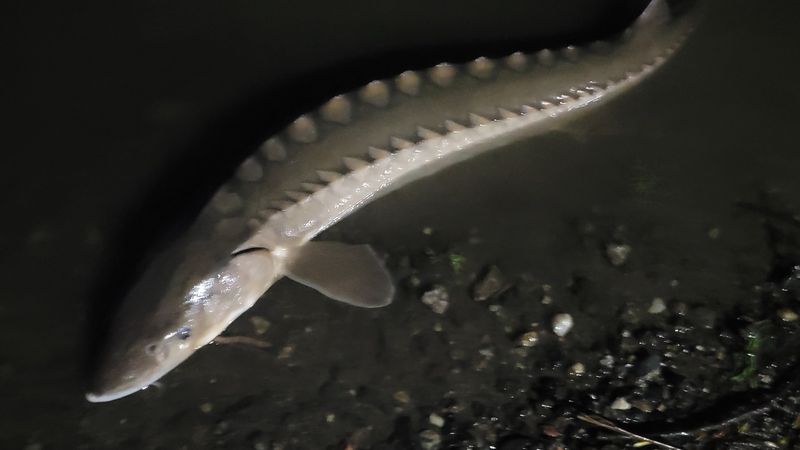
The Shortnose Sturgeon is a fascinating, ancient fish dwelling in the coastal rivers along the eastern U.S. It is distinguished by its armored body and short snout.
Unfortunately, the Shortnose Sturgeon has been listed as endangered for decades due to habitat degradation and overfishing. Efforts to protect this species have included regulating fisheries and improving river habitats.
However, challenges like climate change and pollution continue to threaten its survival. The Shortnose Sturgeon’s story is a testament to the resilience of life but also serves as a warning of the consequences of unchecked human activity.
Community engagement and stringent environmental policies are vital to ensure the survival of the Shortnose Sturgeon. This fish’s fate is intrinsically linked to the health of the river systems it inhabits, making its conservation a priority for maintaining biodiversity.
5. Pallid Sturgeon
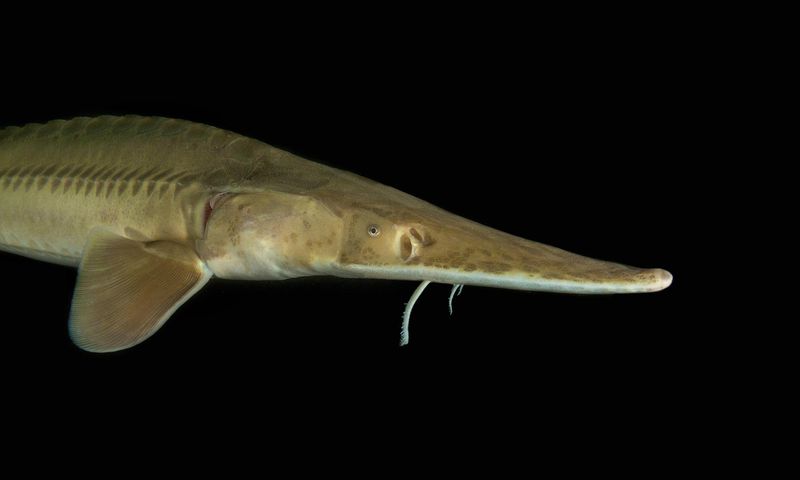
The Pallid Sturgeon is a pale, ghostly fish native to the waters of the Missouri and Mississippi Rivers. Known for its distinctive elongated body and barbels, it is often referred to as a living fossil.
Unfortunately, it faces severe threats from habitat alteration and river management practices. Conservation strategies for the Pallid Sturgeon focus on restoring river habitats and breeding programs to increase population numbers.
The challenges it faces reflect the broader environmental impacts of river regulation and the need for sustainable water management. The survival of the Pallid Sturgeon relies heavily on public awareness and the implementation of conservation policies.
Supporting initiatives that restore natural river dynamics can benefit this and other species. The fate of the Pallid Sturgeon underscores the importance of preserving our natural waterways for future generations.
6. Atlantic Salmon
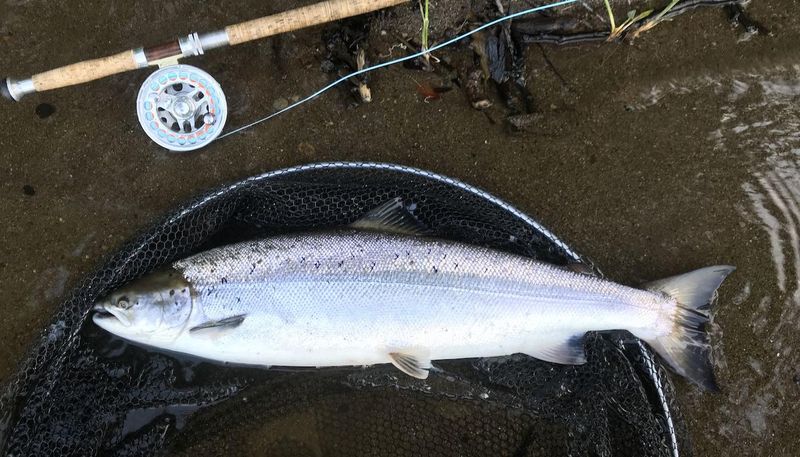
Atlantic Salmon are renowned for their incredible life cycle, migrating from freshwater rivers to the ocean and back to spawn. These fish are iconic to the rivers of the northeastern U.S., but their populations have drastically declined due to overfishing, river dams, and pollution.
Efforts to restore Atlantic Salmon involve removing obstacles to migration and improving water quality. Conservation groups are actively working to reintroduce these fish into their native habitats, but challenges remain.
The Atlantic Salmon’s plight highlights the need for comprehensive river management and international cooperation in conservation efforts. Public support and involvement can drive the success of reintroduction programs, ensuring these majestic fish continue their age-old journeys.
7. Delta Smelt
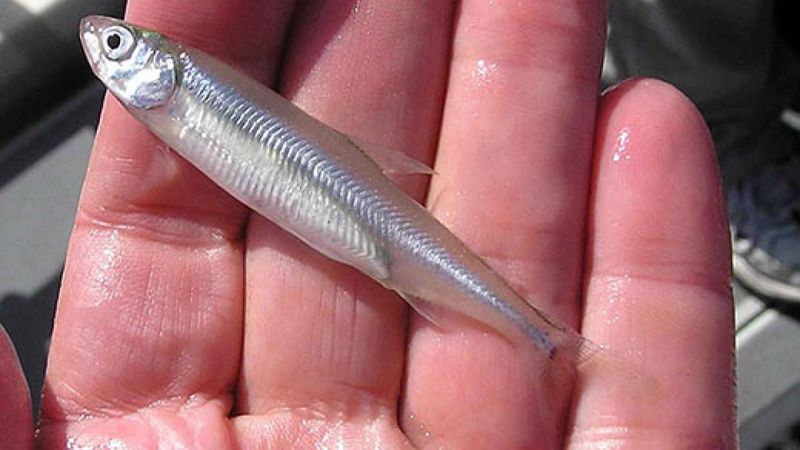
The Delta Smelt is a small, translucent fish endemic to California’s Sacramento-San Joaquin Delta. This fish’s existence is precarious, as it serves as an indicator species for the health of its habitat. The Delta Smelt’s population has plummeted due to water diversions, habitat loss, and pollution.
Conservation efforts focus on habitat restoration and ensuring adequate water flows in the Delta. However, political and environmental challenges complicate these efforts. The plight of the Delta Smelt symbolizes the broader environmental issues facing the Delta ecosystem.
Its conservation demands a balance between human water use and ecosystem health. Public awareness and advocacy for sustainable water policies are crucial for the survival of the Delta Smelt and the overall health of the Delta.
8. Colorado Pikeminnow
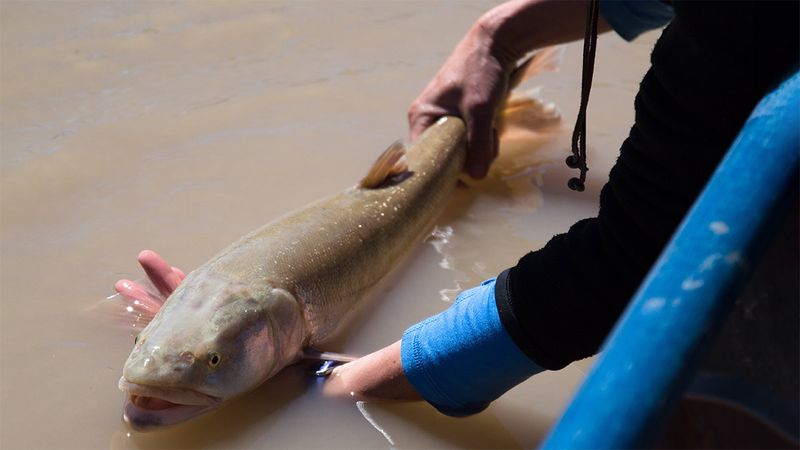
The Colorado Pikeminnow, once abundant in the Colorado River system, is a large, torpedo-shaped fish known for its incredible speed and agility. However, its population has seen a steep decline due to river damming and habitat fragmentation.
Restoration efforts include improving river flow and removing barriers to migration. Despite these efforts, the Colorado Pikeminnow continues to face challenges from altered river dynamics and invasive species.
The story of the Colorado Pikeminnow underscores the importance of maintaining free-flowing rivers. Public engagement and advocacy for river restoration are key to ensuring the survival of this remarkable species.
Understanding and supporting conservation initiatives can help protect the Colorado Pikeminnow and other native fish species.
9. Gila Trout
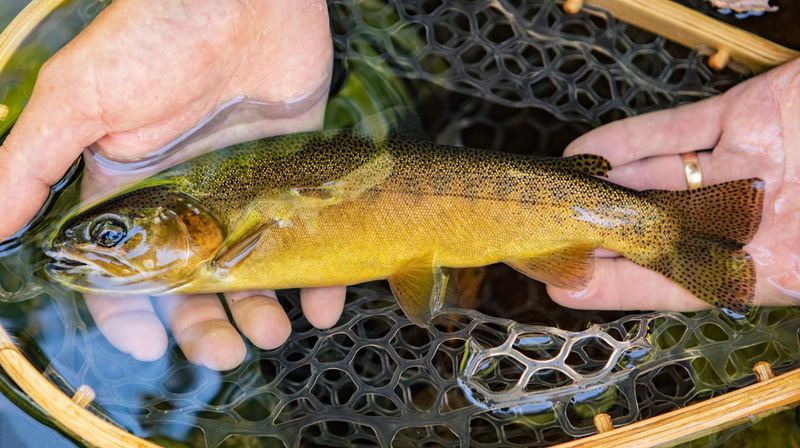
The Gila Trout, with its striking golden-yellow body adorned with black spots, is a native fish of the mountain streams in New Mexico and Arizona. This species has faced a tumultuous history, with near-extinction events due to habitat destruction and competition with non-native species.
Conservation successes have been achieved through habitat protection and breeding programs, allowing the Gila Trout to slowly recover. However, ongoing threats from wildfires and climate change require vigilant monitoring and management.
The Gila Trout’s journey toward recovery highlights the importance of protecting native species and their habitats. Community involvement and awareness can bolster conservation efforts, ensuring this beautiful fish remains a part of the region’s natural heritage.
10. Boulder Darter
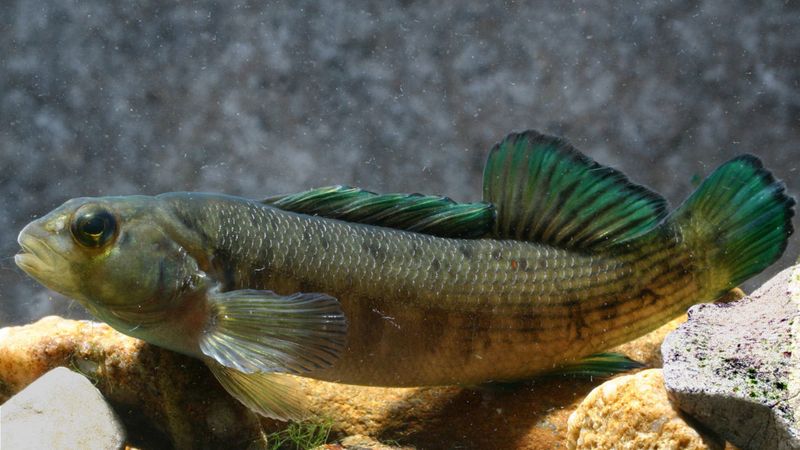
The Boulder Darter is a small, colorful fish native to the Elk River in Tennessee. Known for its intricate body patterns, this fish thrives in fast-flowing, clear waters but faces threats from habitat degradation and water pollution.
Conservation actions for the Boulder Darter involve habitat restoration and water quality improvement. Efforts to monitor and protect its environment are essential for its continued survival. The Boulder Darter’s plight emphasizes the interconnectedness of species and their habitats.
Sustaining diverse aquatic communities requires preserving clean, healthy waterways. Public support and involvement in environmental protection can play a pivotal role in securing a future for the Boulder Darter and similar species.

